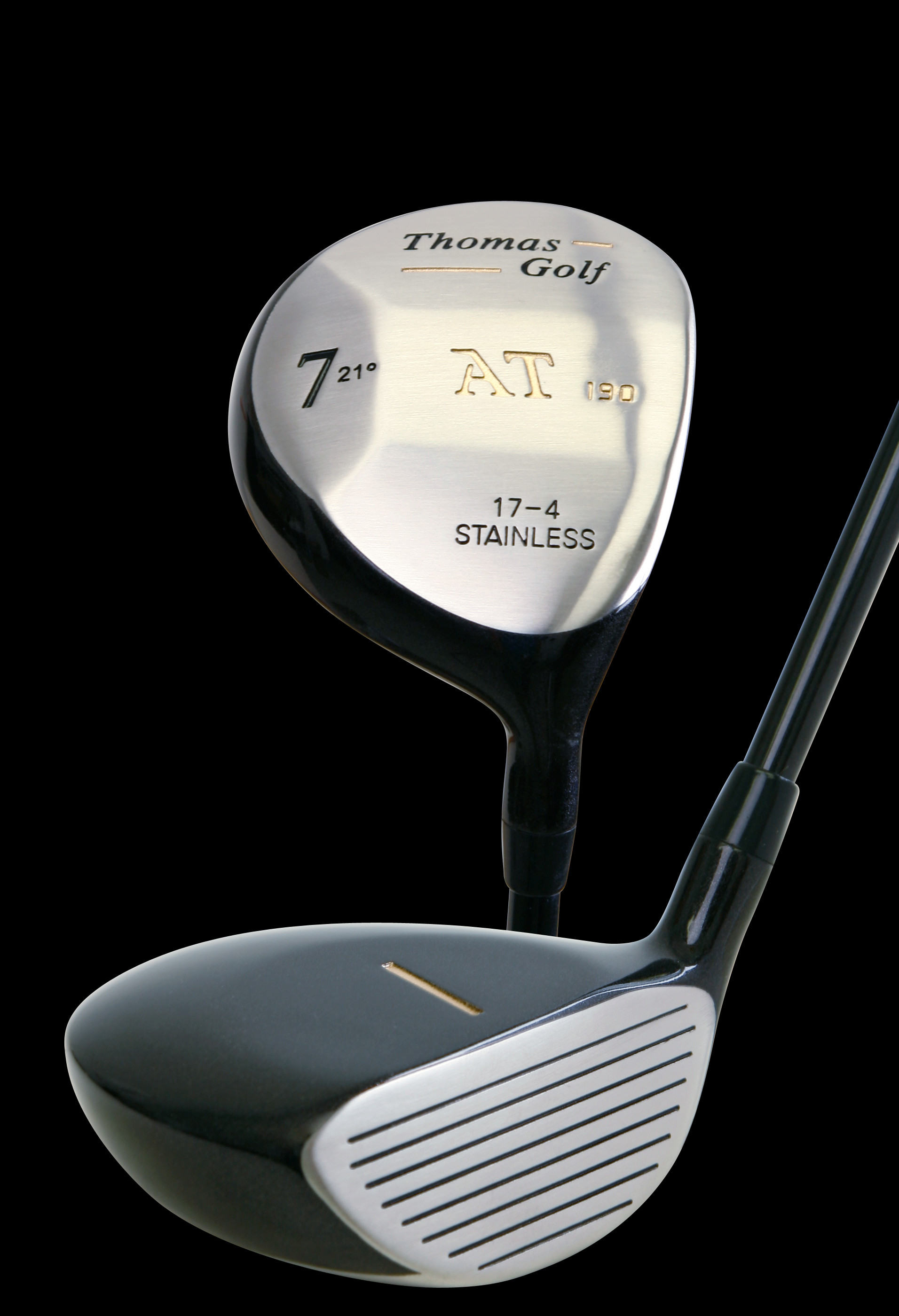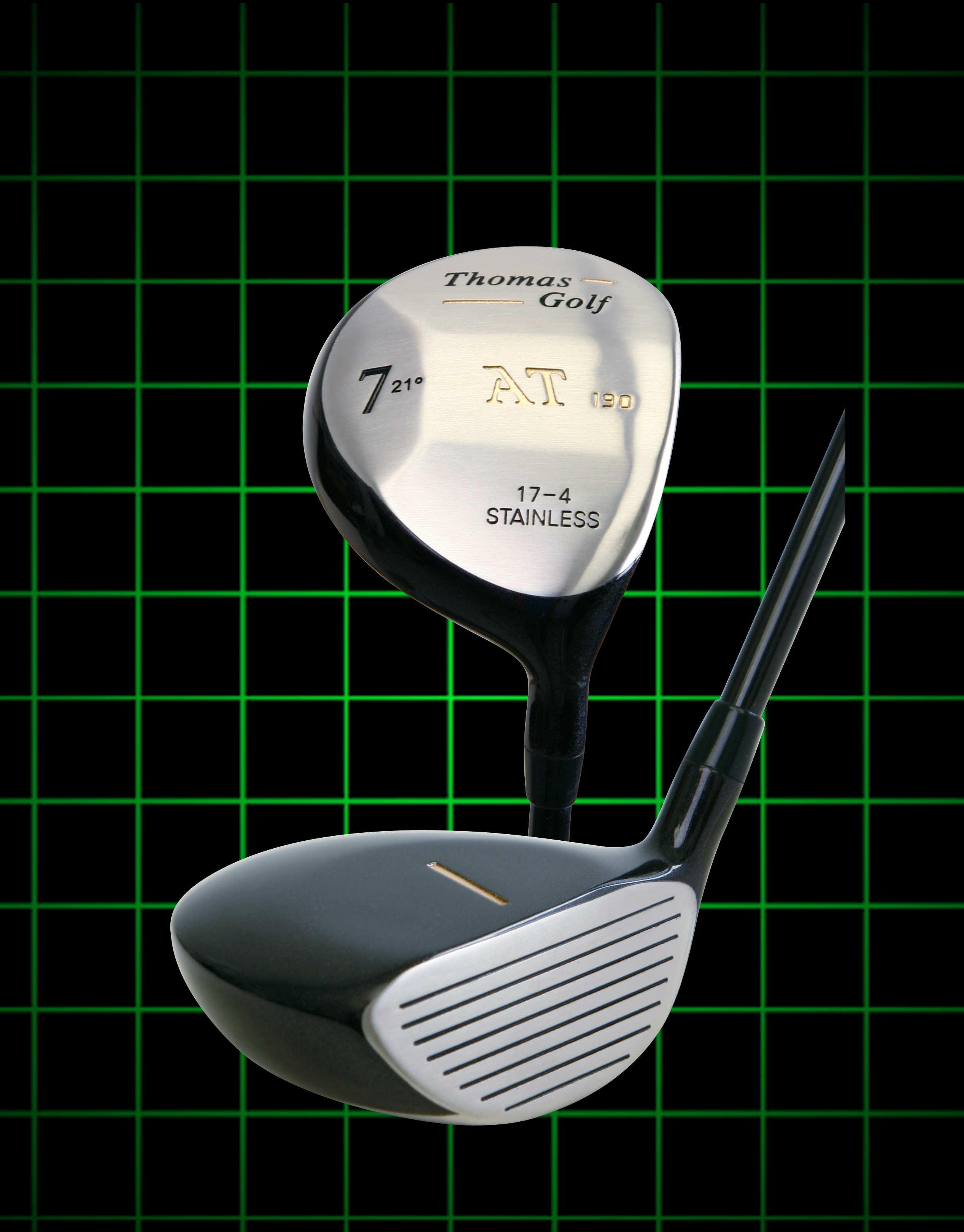
Most golfers should carry a #7 fairway wood because of it’s perfect complement of length and loft it offers, read why:
The seven wood is a great choice to replace a 3 iron or 3 hybrid. It has a larger head than a hybrid which for some golfers, it will give more convenience at the address position. With 22 degrees of loft, it provides more loft than a 5 wood, which typically has only about 18 degrees of loft. The additional loft makes it easier to hit the ball high even off a hard pan lie, and it’s also very effective from difficult lies like tall grass. In fact, most golfers can hit their 7 wood from the fairway or the rough with enough height and forgiveness, which is not always the case with the 5 wood.
The club-length of a #7 wood is about 1 inch shorter than a 5 wood wood, making it much easier to consistently hit the sweet spot.
The #7 wood will have about 10 more grams of sole head-weight compared to a 5 wood wood. This additional sole weight will help you in two ways; getting the ball up quicker off the fairway or out of a fairway bunker.
The #7 wood gives you added flexibility to hit the ball high over obstacles and carry over long drops. The 7 wood is a great go to club and for some golfers, it has become their favorite club. The golfer get"s the feeling they can depend on their 7 fairway wood even under pressure during a round.
For more information on Thomas Golf Men"s Fairway Woods click here or Ladies Fairway Woods click here

Learning How to Read the Lie
Reading the lie before hitting any shot on the golf course is an important step to take, but it is especially crucial when hitting a fairway wood. While they are versatile clubs, they aren’t suited to play from every kind of lie – so you need to make sure that the lie of your ball
is going to allow for the kind of shot that you want to hit. Obviously, this isn’t an issue when you use a fairway wood off the tee, but you need to review your lie carefully for any other shot hit throughout the course.
When you find your ball in the fairway, you shouldn’t have too much trouble with the lie of the ball. The only thing you need to be aware of regarding a fairway lie is not having enough grass under the ball to make solid contact. If the fairways are particularly ‘thin’ (not lush with grass), you might have trouble getting the ball up into the air with a fairway wood. In this case, you may be better of hitting an iron if possible to make it easier to strike the ball properly off of the thin lie. The design of your fairway woods dictates that there is very little margin for error when you don’t have enough grass sitting under the ball.
The opposite of a thin lie in the fairway is a thick lie in the deep rough. In this case, you need to look at a very specific spot to decide what your options are – the few inches directly behind the ball. If there is deep grass right behind the ball where the club
would be swinging down into impact, hitting a fairway wood is probably not a realistic option. Instead, consider pulling a short iron and hitting a lay up to get your ball back on the short grass as quickly as possible. A fairway wood simply isn’t designed to cut through the long grass like an iron is, and you would be taking a big risk if you were to try the fairway wood shot from that kind of a lie. The only time you should consider hitting a fairway wood from the rough is when you are lucky enough to draw a good lie that has very little long grass behind the ball. Unless you get this kind of fortune with your lie in the rough, take the smart option and use a shorter club.
One time you might be surprised to learn that your fairway wood can be a good option is when you find your ball in a fairway bunker. As long as you draw a good lie in the sand, with the ball sitting up, you should be able to hit your fairway woods and make solid contact to get more distance than you could achieve with an iron. As long as the lip of the bunker on your target line is low enough to clear with the fairway wood that you select, a long shot from the sand is definitely an option.
Of course, the ideal situation to find yourself in with a fairway wood is a fairway lie with plenty of lush, short grass beneath the ball. When this is the case, feel free to pull your fairway woods and swing with confidence knowing that the lie isn’t going to hold you back. To get the most from your fairway woods, pick and choose the right spots – and the right lies – when making club selection.






